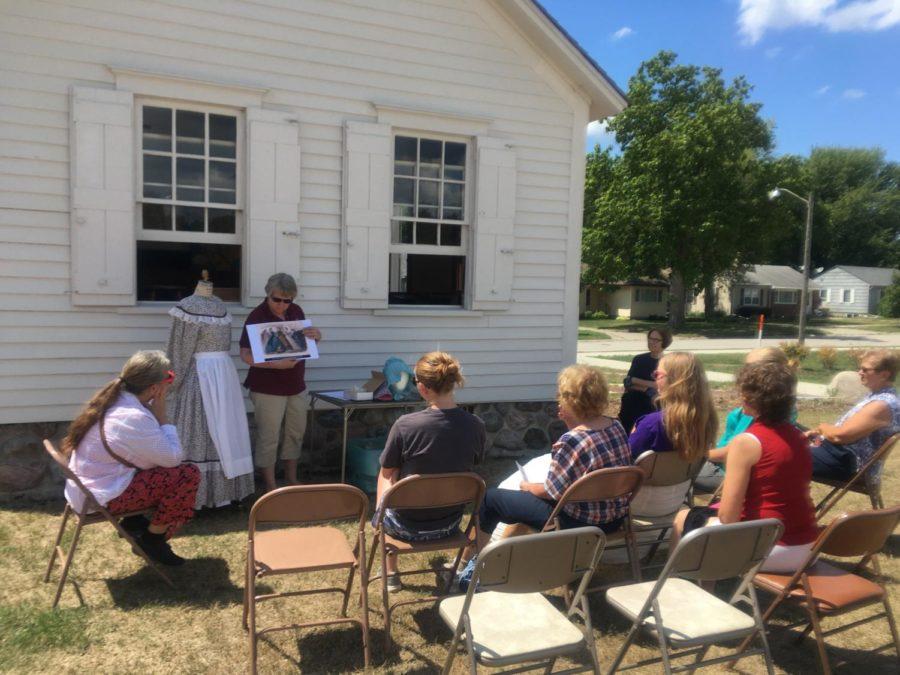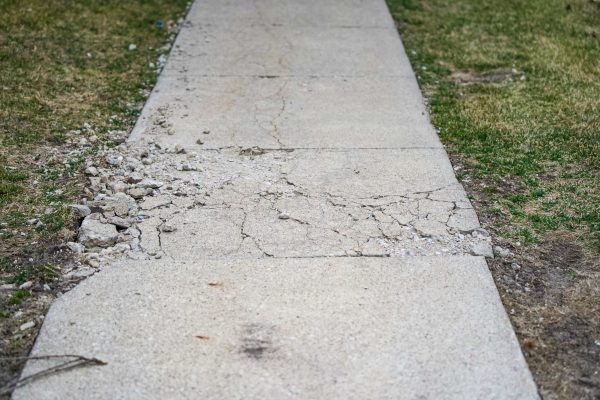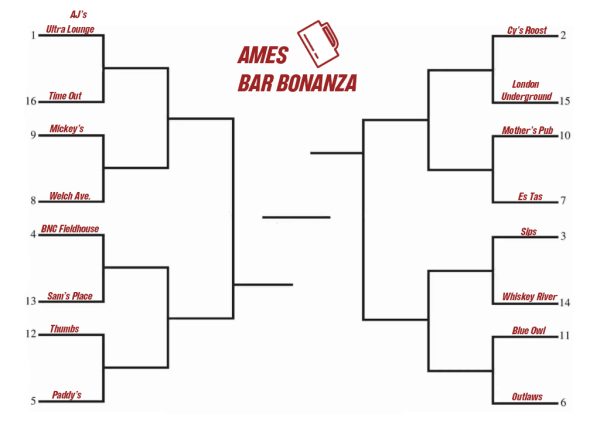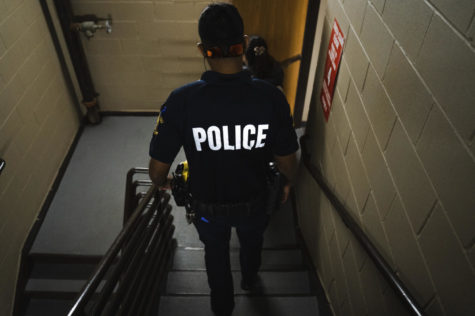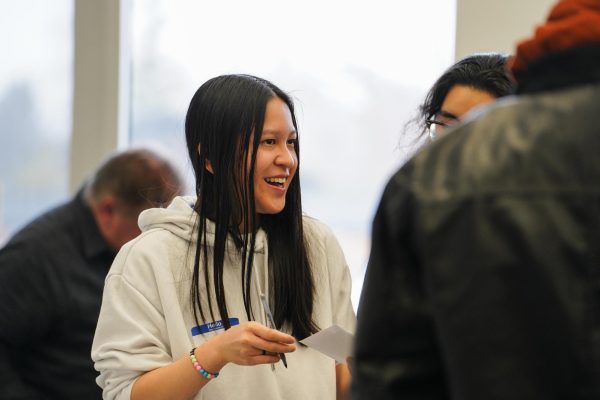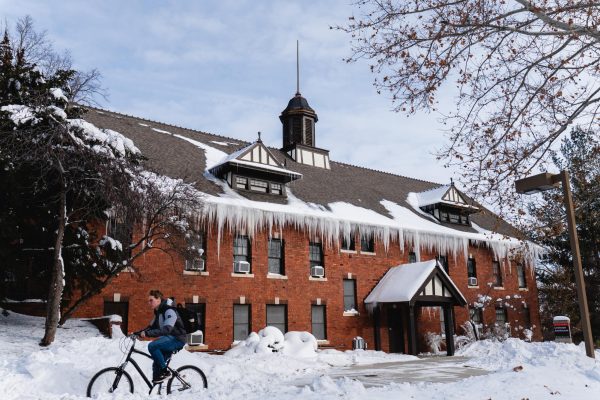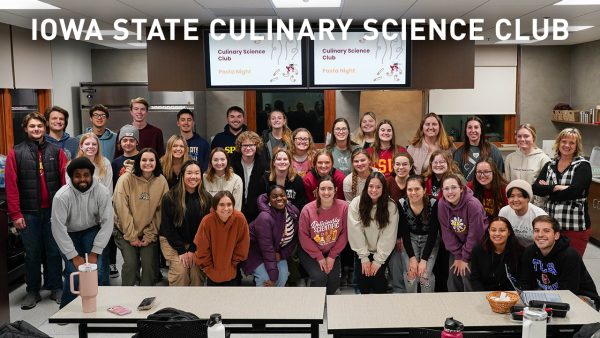People learned about and tried on clothing at the time of the Hoggatt School last Sunday
August 2, 2017
The lecture “What they wore: corsets, bustles, and more”, talking about clothing in 1860s, was presented on Sunday afternoon by Sharon Wirth, the Hoggatt School docent, also the lecturer in the department of Apparel, Events & Hospitality Management at Iowa State University.
The lecture gave the public general history background in 1860s and talked about designs and functions of pieces of clothing at that time, involving outer dress, hoop skirt, petticoat, corset, chemise, and bonnet. Wirth also let people touch and wear the clothes at that time to have a sense of going back into the 1860s.
The 1860s is very different from now, during which the Civil War was going on and large amounts of people were moving westward and exploring the prairies. Grasses on the prairies were taller than adults. There were no cars and no grocery stores. Clothes were handmade so It was common to see a sewing machine in people’s home.
People from high societies wore elaborate clothing different than farmers and labors. A bonnet was to decorate and prevent sun. Elaborate dresses had full skirts usually with a hoop skirt. Petticoat was to stay warmth and keep the shape of the dress. Women wore corsets, the tight-fitting garments to support and shape the waist, because of the favor for narrow waists then. Girls wore “stays”, similar to corsets but softer.
Beneath the corset, women wore chemises to prevent the sweat and body oil from touching the fancy clothes. Girls wore chemises similar to their mothers’. “It was very hard to launder and they didn’t do launder as nearly as much. Because they didn’t have the nice washing machine like we do now,” Wirth said.
Mem wore some pretty fitted jackets with a long tail. Hats were important. Boys wore tunics and shortened pants at school. When it comes to Sunday church, boys wore jackets with a little silk tie and longer pants.
People usually couldn’t tell apart boys and girls because they both wore dresses until they were toilet trained. It was easier to change the diaper with the skirt. Boys could wear trousers if they were toilet trained.
Graduated from Iowa State University, Wirth has been working with Ames Historical Society since she started family in Ames. “I’m very interested in Ames history, I think people need to learn about it and to preserve it. That’s an important part what the Ames Historical Society does. I think it’s a good way to spend my time to help people learn about history of Ames,” Wirth said.
Lucinda Doty, education assistant at Mitchell Elementary School, expressed her interest in history and support for Wirth. “last year I came some too. I like seeing the clothing and I am surprised by the weight of petticoat. My grandmother was born at the turn of the 1900s, so I’m sure they wore clothes like that, a part of their life,” Doty said.

